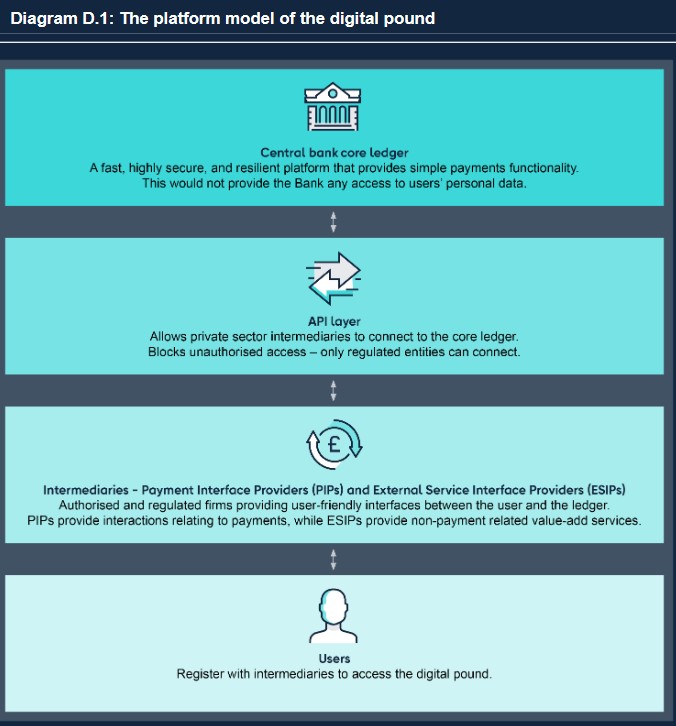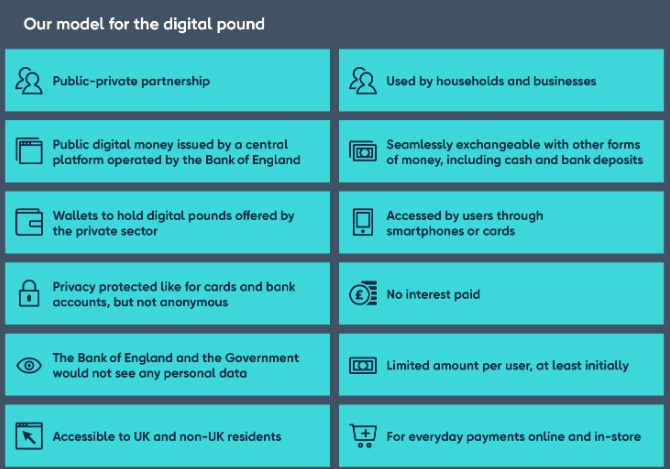The United Kingdom is a step closer to launching a Central Bank Digital Currency (CBDC) after releasing a consultation paper explaining the proposed digital pound, which the public has nicknamed “Britcoin.”
The 116-page consultation paper was jointly released on Feb. 7 by the Bank of England (BoE) and His Majesty’s Treasury. A technology working paper was also released delving into the technical and economic design considerations.
Despite the rise of privately-issued stablecoins in recent years, the paper said CBDCs such as the digital pound can co-exist in what they expect to be a “mixed payments economy.”
“In much the same way that cash exists alongside private money, the digital pound does not need to be a dominant form of money in order to meet its public policy objectives. The digital pound could exist alongside other forms of money, including stablecoins.”
While the BoE and the Treasury hope to have a digital pound launched by 2025 “at the earliest,” at this stage, they’re still not 100% certain that it will be launched at all.
“The Bank and HM Treasury consider a digital pound is likely to be needed in the UK though no decision to introduce one can be taken at this stage,” the paper stated.
The paper explained the primary motivator behind launching the digital pound is to ensure U.K. central bank money remains “an anchor for confidence and safety” in the country’s monetary system and to “promote innovation, choice, and efficiency in domestic payments.”
To achieve this feat, the e-GBP would need to be largely adopted in the retail ecosystem through a series of “public-private partnerships.”
“For the digital pound to play the role that cash plays in anchoring the monetary system, it needs to be usable and sufficiently adopted by households and businesses.”
Users will be able to access e-GBP by connecting to private sector-run API which in turn connects to the core ledger.

Other programmability features including smart contracts and atomic swaps — which enables assets to move across networks — will be enabled.
While the paper states the private sector would help build such infrastructure, it also considers imposing individual limits between $12,000 (£10,000) and $24,000 (£20,000) to essentially prevent its use as a savings account:
“A limit on…
Click Here to Read the Full Original Article at Cointelegraph.com News…
